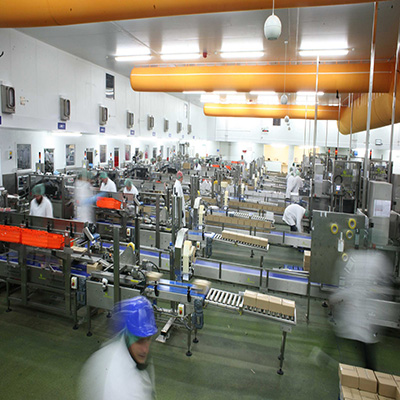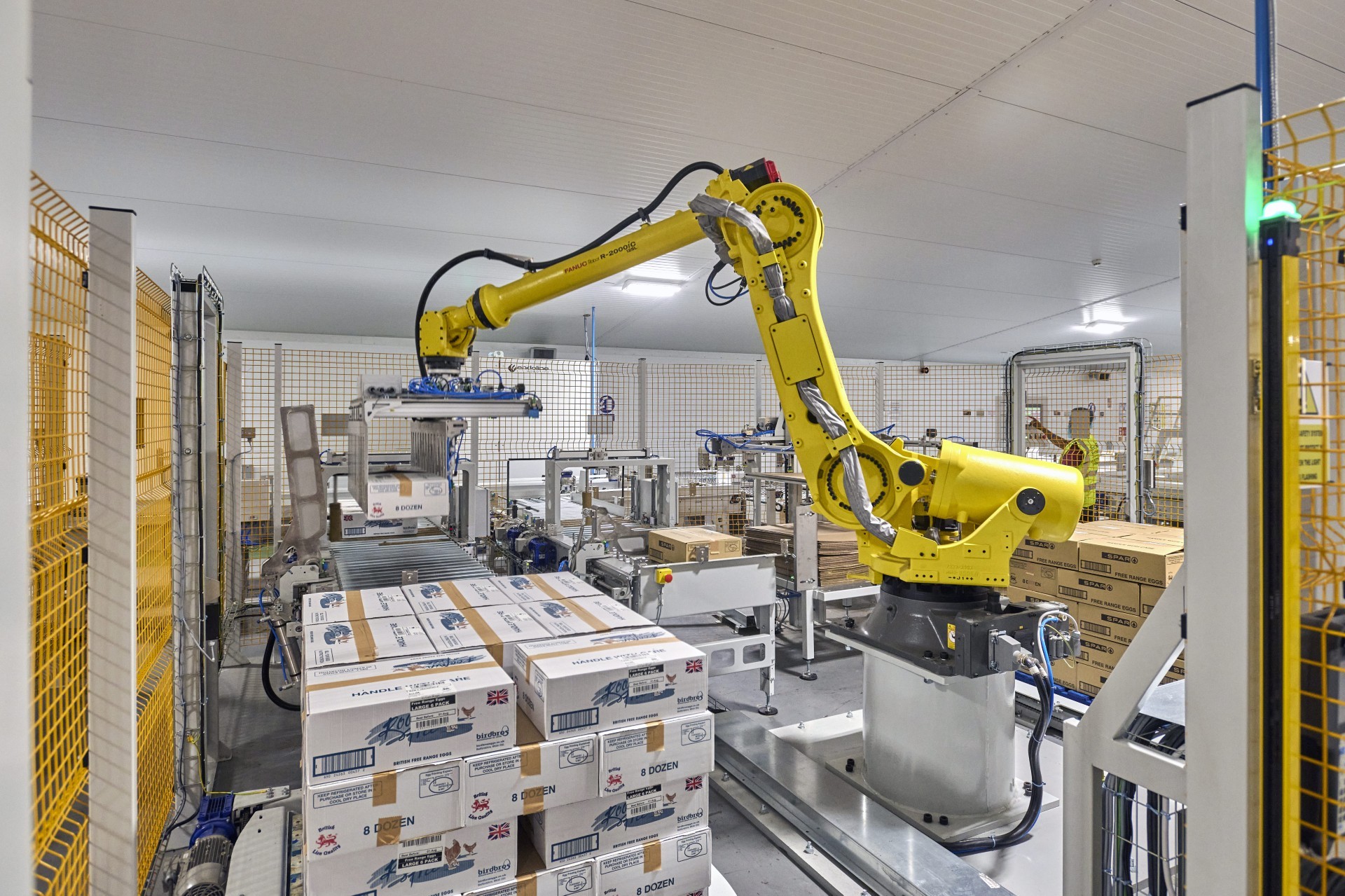E-COMMERCE CONVENIENCE
E-COMMERCE CONVENIENCE – ENDOLINE AUTOMATION SERVES NEW AGE OF CONSUMERISM
Spokesperson, Andrew Yates, Managing Director of Endoline Automation
Consumer convenience is the new currency. The journey from online shopping cart to doorstep has been compressed to a mere 24 hours by some e-Commerce retailers, with customers demanding full transparency and tracking at every stage. What was once considered a luxury of seamless online shopping, next-day delivery and hassle-free returns, is now very much a baseline consumer expectation.
This shift has redefined the very foundations of production, distribution and retail. e-Commerce has upended traditional supply chains, sparking a radical transformation in how goods are produced, packed, processed and delivered. The result: A high-pressure environment where businesses must keep pace with ever-growing demands for speed and efficiency.
Meeting these expectations behind the scenes is far from simple, as Andrew Yates, Managing Director of Endoline Automation observes: “Since the rise in e-Commerce sales, companies have faced a multitude of logistical challenges, from inventory visibility and adjusting fulfilment capacity, to processing goods of varying sizes, navigating last-mile delivery and managing the complexity of product returns.”
In this new age of e-Commerce, operations must be more than just functional. Flexibility, agility and the strategic adoption of automation and robotics are now essential to remain competitive and avoid obsolescence.
Europe’s e-Commerce powerhouse
The UK is undeniably Europe’s most advanced e-Commerce market, ranking fourth globally behind China, the US and Japan.[1] With a projected annual revenue growth of 12.6% by 2050 and nearly 50 million online shoppers, close to three-quarters of the UK population now purchase goods online.
Between 2017 and 2020, the UK e-Commerce audience jumped from 35 million to 42 million, a 20% increase. The Covid-19 pandemic accelerated this shift, pushing many UK retailers to adopt online operations out of necessity. Today, that move is no longer about short-term survival, it is a fundamental logistical offering in this new age of consumerism.
Source: https://ecommercedb.com/markets/gb/all
Behind the ‘buy’ button
Today’s fast-paced e-Commerce environment places great emphasis on repeat business. Retailers that deliver a seamless journey, from purchase to delivery, can expect stronger customer satisfaction, loyalty and retention. Conversely, a poor experience can trigger a downpour of negative consequences, from lost customers to brand-damaging reviews. Unfortunately for distribution centres, a recent Trustpilot report by HelloDone suggested that over half of all customer complaints stem from issues with the post-purchase experience.
The speed, accuracy and affordability of products demanded by today’s consumers rely on tightly coordinated processes and can test even the most advanced infrastructures. As a result, factories and distribution warehouses must rethink the design and functionality of their systems in order to stay ahead.
These growing expectations are placing pressure on retailers’ bottom lines, fuelling significant investments in automation. Packing and dispatch lines are increasingly adopting technologies like robotic arms, conveyor systems, case erectors, packers, sealers, palletising systems and Automated Guided Vehicles (AGVs) to meet demand. Andrew expands: “Flexibility and scalability are key requirements for modern operations. Technology-driven fulfilment systems allow businesses to adapt to fluctuating demand, accelerate the flow of goods and scale efficiently, without sacrificing accuracy.”
A pivotal moment came in 2012, when Amazon acquired Kiva Systems, marking a major shift towards warehouse automation. The integration slashed Amazon’s “click-to-ship” cycle times from 75 minutes to just 15, cutting operational costs by 20% and setting a new global benchmark for fulfilment efficiency.
The ripple effect was almost immediate. Venture capital investments in warehouse robotics surged from less than $250 million in 2012 to over $1.6 billion in 2015, reaching $2.7 billion in 2017. As physical-only retail continues to decline, the future of warehousing is unmistakably digital.
A powerful example comes from one Endoline customer, an international breakfast cereal company that supplies more than 100 product SKUs to over 10 UK supermarkets. With the help of a fully automated Endoline Robotics installation, the company doubled its production and palletising output without expanding its physical warehouse footprint. “For lines like these – handling a substantial number of SKUs, 100 different case sizes, and more than 50 palletising configurations – highly intelligent, automated systems are essential to deliver seamless operational efficiency and maintain consistent fulfilment speed,” adds Andrew.
The cost of convenience
While automation and robotics offer transformative benefits, they are not without their challenges. Significant upfront investment costs, safety considerations and the continued need for human oversight in machine maintenance, quality testing and customer service, must all be accounted for.
The longstanding debate around whether consumers are truly willing to pay for delivery and returns, particularly in a market shaped by Amazon Prime’s “free” delivery model, has pushed other companies to optimise and automate wherever possible. The universal e-Commerce goal focused on reducing costs, strengthening profit margins and maintaining the highest customer satisfaction.
When investing in fully automated production lines, flexibility is key. Systems must be able to adapt to the demands of e-Commerce, including the ability to handle multiple case sizes on the same line at speed. Technologies like Endoline’s random case sealers, which adjust automatically without operator input, are just one example of how automation can drive greater efficiency and throughput.
Packaging security is equally important in e-Commerce. Criminal activity, counterfeiting and even damaged boxes caused by damp tape when left on British doorsteps exposed to all climates, has been cited as one of the real e-Commerce menaces.
Tamper-evidence case seals are one of the easiest ways to counteract this. It is predominantly why Endoline continues to push the boundaries of innovation with solutions like its automated wet paper tape machine. The company also has a hot glue solution for heavier product cases that is more durable in all weather conditions, can be applied top and bottom of each random case size during filling, and is even harder to tamper with.
Redefining fulfilment possibilities
“As a British automation specialist, these latest systems exemplify our ability to adapt to market trends and deliver high-quality, efficient, and sustainable automated warehouse and logistics solutions to our customers worldwide,” notes Andrew.
The rapid growth of e-Commerce underpins this transformation from labour intensive, manual pick and packing operations, to scalable, fully automated order placement, labelling, fulfilment, tracking and same-day shipment systems. As orders become increasingly complex, automated solutions will inevitably ensure fewer errors and even faster fulfilment, assures Andrew.
Redefined by modern consumer expectations, automation is now no longer a future consideration, it is a present-day necessity for manufacturers, distributors and retailers that want to remain competitive, scalable and resilient. “As the e-Commerce landscape continues to evolve, the tools, technologies and techniques need to keep pace to continue driving it forward,” affirms Andrew.
*****To further support e-commerce businesses in enhancing both security and sustainability, Endoline has introduced its advanced 900 Series Wet Paper Tape Case Sealer. This innovative solution provides a highly secure, tamper-evident seal while reducing plastic use, ensuring products remain protected throughout transit and meeting growing consumer and industry demands for eco-friendly, trustworthy packaging. *****
[1] https://www.business.com/articles/10-of-the-largest-ecommerce-markets-in-the-world-b/



Leave a Reply
Want to join the discussion?Feel free to contribute!